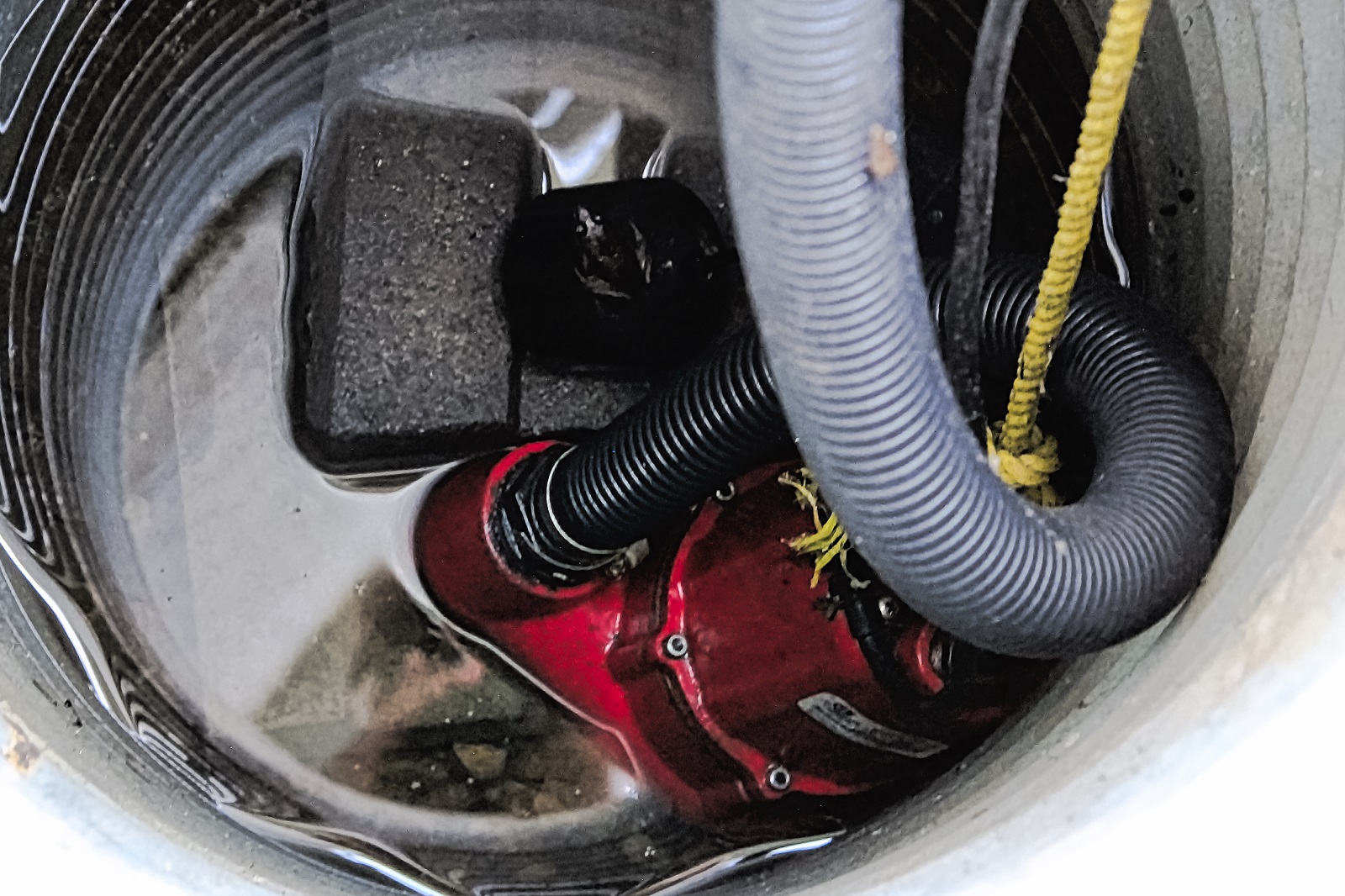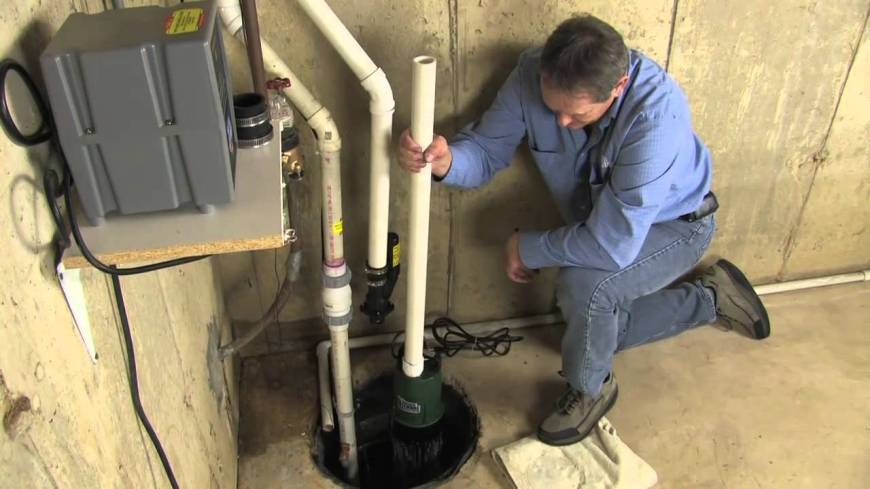Clear Instructions for Taking Care of a Sump Pump
Schedule Service NowThe article directly below involving Keep Your Sump Pump Clean, It'll Keep You Dry is incredibly informative. You should check this stuff out.

Sump pumps are critical elements in several homes, especially in areas prone to flooding or extreme wetness. They help stop water damage by successfully removing excess water from basements or crawl spaces. However, like any other device, sump pumps require regular upkeep to guarantee they work efficiently when needed one of the most. Cleaning your sump pump is an essential part of its maintenance, and comprehending exactly how to do it correctly can conserve you from pricey repairs and potential calamities.
Intro
Keeping a tidy sump pump is vital for its appropriate functioning and long life. Neglecting this essential task can lead to obstructions, breakdowns, and inevitably, water damage to your property. For that reason, discovering how to clean up a sump pump is essential for home owners who rely on these gadgets to maintain their cellars dry and protected.
Understanding the Sump Pump
Before diving into the cleansing process, it's essential to have a standard understanding of exactly how a sump pump works. Commonly mounted in a pit or basin below the basement floor, a sump pump consists of several key components, consisting of a pump, a float button, and a discharge pipe. When water collects in the pit, the float button activates the pump, which then pumps the water out through the discharge pipeline, away from the building's structure.
Indicators of a Dirty Sump Pump
Understanding when your sump pump needs cleaning is critical for preventing potential breakdowns. Some usual indications that show an unclean sump pump include unusual sounds during operation, lowered water flow, and visible particles in the pit. If you observe any one of these signs, it's vital to cleanse your sump pump immediately to stay clear of any additional concerns.
Preparing for Cleansing
Prior to you begin cleansing your sump pump, it's essential to take some safety preventative measures. Beginning by shutting down the power to the pump to avoid any electrical crashes. Furthermore, use ideal safety equipment, such as gloves and goggles, to protect yourself from dirt, particles, and prospective pathogens.
Detailed Overview to Cleaning a Sump Pump
Shutting Off the Power
Begin by detaching the power supply to the sump pump to avoid any kind of accidents while cleaning.
Getting Rid Of Particles and Dust
Make use of a bucket or an inside story to remove any type of noticeable particles, dirt, or sediment from the sump pit. Dispose of the particles correctly to prevent it from clogging the pump or the discharge pipe.
Cleaning the Pump and Drift Switch Over
When the pit is free from particles, thoroughly eliminate the pump from the pit. Evaluate the pump and the float switch for any kind of signs of damage or wear. Use a soft brush or fabric to cleanse the surfaces and remove any type of built up crud.
Purging the System
After cleansing the pump and float button, purge the sump pit with tidy water to eliminate any type of continuing to be dirt or debris. This will certainly aid make certain that the pump runs efficiently and effectively.
Looking For Correct Performance
Before reinstalling the pump, execute a fast examination to ensure that the float button turns on the pump correctly. Put some water into the sump pit and observe the pump's operation. If every little thing is functioning correctly, you can reassemble the pump and reconnect the power supply.
Upkeep Tips to Keep Your Sump Pump Clean
In addition to periodic cleansing, there are a number of upkeep tips you can comply with to maintain your sump pump in ideal problem:
Final thought
Cleansing your sump pump is a critical element of its maintenance and ensures that it runs properly when you require it the most. By following the steps described in this overview and including normal upkeep right into your regimen, you can expand the life expectancy of your sump pump and protect your home from water damage.
6 STEPS ON HOW TO CLEAN A SUMP PUMP PROPERLY
UNDERSTANDING SUMP PUMPS
Your sump pump plays a crucial role in protecting your home by managing and removing excess water. It primarily functions as a “shieldâ€, guarding your basement against the damaging effects of water accumulation. The pump is housed in a sump pit in the lowest part of your basement, and its job is to pump out any water that collects there.
During heavy rainfalls or when snow melts rapidly, water can infiltrate your basement, posing potential risks like flooding, structural damage, and harmful mold growth. Here, the sump pump springs into action, pumping out the intruding water and directing it away from your home.
SAFETY FIRST
Before cleaning, remember to prioritize safety. Disconnect the sump pump from the power source to prevent any accidental electric shocks. Also, wear sturdy gloves to protect your hands from any sharp or dirty components within the pump.
REMOVE THE SUMP PUMP
After ensuring your safety, the next step is to remove the sump pump from its pit. Doing this might require careful maneuvering as you don’t want to damage any pump components. Once removed, clean the sump pit to remove any accumulated debris or sludge.
INSPECT THE PUMP
Inspect the pump for any visible signs of wear or damage. Check the power cord, float switch, and impeller housing. If any components look worn out or damaged, consider replacing them to ensure optimal performance.
CLEAN THE PUMP
Thoroughly clean the pump with warm, soapy water. Make sure to rid it of any dirt, gravel, or other debris that might impede its performance. You can use a toothbrush to clean the small, hard-to-reach parts of the pump.
REINSTALL THE SUMP PUMP
Reinstall the pump into the sump pit Make sure it’s positioned correctly to remove the water effectively Once it’s back in place, reconnect it to the power source TEST THE PUMP
Finally, pour some water into the pit to ensure the pump works correctly. It should start automatically and begin pumping out the water; if it doesn’t, check the power source and the positioning of the pump.
Remember, while cleaning your sump pump is an essential part of home maintenance, hiring a professional plumber for a thorough inspection and cleaning at least once a year is also important. This will ensure that your pump is in optimal condition, ready to protect your home from potential water damage.
BEST PRACTICES FOR CLEANING SUMP PUMP DISCHARGE PIPES
Regular Inspection: Regularly inspect your discharge pipes, especially during heavy rainfall or snowmelt periods. Look for any signs of blockage or damage. Early detection of problems can prevent serious issues down the line. Periodic Cleaning: Over time, sediment and debris can accumulate in the discharge pipes, impeding the flow of water. Regular cleaning helps keep the pipes clear and functioning efficiently. You can use a high-pressure water jet to effectively clean the pipes. Insulation During Winter: In colder climates, discharge pipes can freeze, blocking the outflow of water. Protect your discharge pipes from freezing temperatures by insulating them with foam pipe insulation. This will ensure the sump pump can continue to discharge water even in freezing conditions. Proper Positioning: The discharge pipe should be positioned to direct water away from your home’s foundation. Improper positioning can lead to water seeping back into the basement. Ensure the pipe is long enough and angled correctly. Installation of a Check Valve: A check valve prevents water from flowing back into your sump pit after the pump has pushed it out. Installing a check valve helps maintain the efficiency of your sump pump and reduces the risk of flooding. Minimize Pipe Turns: Every curve or turn in the discharge pipe can decrease the efficiency of water flow. By minimizing turns and bends in your discharge pipe, you can increase the efficiency of your sump pump. https://www.fullspeedplumbing.com/how-to-clean-a-sump-pump-properly9999/

I am very drawn to Steps to Cleaning Your Sump Pump Properly and I'm hoping you enjoyed the post. Do you know another person who is in to the topic? Why not promote it. Thanks a lot for your time invested reading it.
Click Here